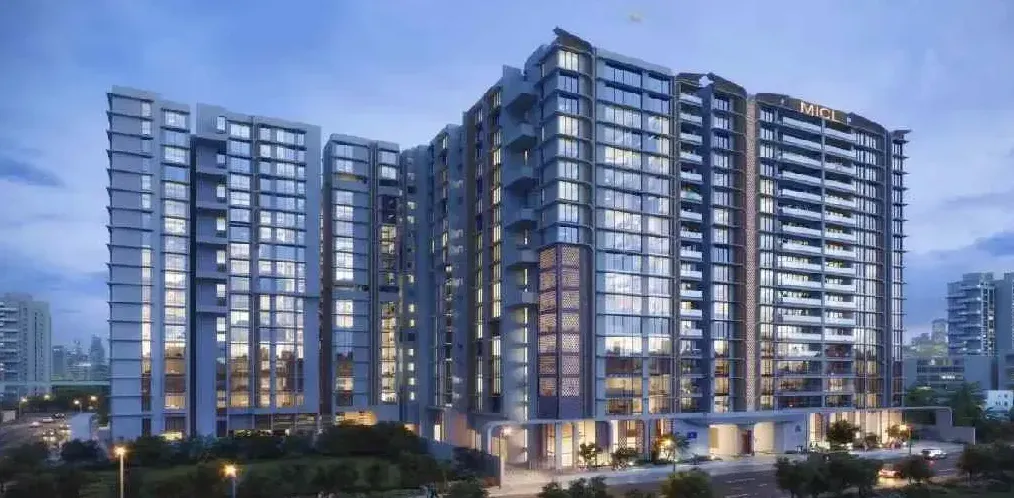Are 4BHKs in Mumbai a Good Investment or Just a Lifestyle Choice?

By
Shrusti Naik
Posted on October 30, 2025. 10 mins

Introduction

Buying a large home in Mumbai, particularly a 4 BHK, often signals more than just space, it reflects lifestyle aspirations, family dynamics and sometimes investment mindset. But the question many serious buyers and investors ask today is: Is a 4 BHK in Mumbai a good investment or simply a lifestyle choice?
In this article, we adopt a balanced, India-centric view, with fresh 2025 data, regulation context, and market insights. We’ll evaluate the investment-case for 4 BHK units in Mumbai, look at the lifestyle premium they command, assess risks, and give you actionable take-aways so that you can make an informed decision whether to invest or live. Check out Who is Buying 4 BHKs in Mumbai? Demand Trends in 2025 Explained
Key Stats at a Glance
- In Mumbai in 2025, 4 BHK units in prime localities are quoted in excess of ₹10 crore. [1]
- Luxury housing (homes priced above ₹1 crore) now accounts for ~62% of residential sales in India during H1 2025, up from ~51% a year earlier. [2]
- The median price per sq ft in Mumbai rose ~6% year-on-year and stood at ~₹27,500/sq ft in FY 2024-25. [3]
- In Mumbai’s redevelopment pipeline, ~44,000+ homes worth ₹1.3 lakh crore are expected by 2030—potentially adding supply even in the premium sector. [4]
Interpretation: The investment case for large homes like 4 BHKs rests on high entry value, growing luxury demand, and limited supply—but also rising competition and holding cost.
H2: Investment Case for 4 BHKs in Mumbai
H3: Why it may qualify as a good investment
-
Scarcity & premium pricing: Since large‐unit launches in Mumbai are fewer, a well-positioned 4 BHK often commands a premium and scarcity value. Developers and market observers note that luxury launches (₹10 crore+ ticket) surged over 164% in recent years. [1]
-
Luxury demand momentum: High-net-worth individuals (HNIs), NRIs and up-graders are increasingly targeting larger apartments in prime Mumbai zones. The luxury surge suggests that larger homes are being treated as investment assets. [1]
-
Capital appreciation potential: Prime micro-markets like Bandra, South Mumbai or Worli have seen double-digit appreciation in luxury segments. [1] The “premium” tag helps large units hold value better during cycles.
H3: Quantitative example
Assume you buy a 4 BHK in a premium zone for ₹20 crore in 2025. If the market in that zone appreciates at 8% annually, in 5 years value ≈ ₹29.4 crore. Benefits: major capital gain, high entry barrier deters many competitors.
H3: Tax & regulatory benefits
- For high‐value residential properties, standard capital-gains tax rules apply (20% with indexation for long‐term holdings over 24 months) under the Income Tax Act.
- Buying through builder under construction still attracts GST (if applicable) and stamp duty at state rates (e.g., ~6% in Maharashtra for male buyer). These costs factor into investment calculation.
H2: Lifestyle Choice Axis — Why Many Buy 4 BHKs
H3: Space for multi-generational living & lifestyle demands
Mumbai’s families increasingly prefer 4 BHK for: children’s rooms, home-office, guest rooms, wellness zones. The premium large homes deliver lifestyle comfort more than purely investment returns.
H3: Premium amenities & prestige
Large homes in prime localities come with branded finishes, smart-home tech, concierge services, sea-views. The “lifestyle” dimension often drives purchase rather than ROI.
H3: Up-gradation narrative
If you already own a 3 BHK, a move to a 4 BHK might reflect life stage change: children grew up, parents moved in, or you want longer-term residence. In such cases the home is as much a living asset as an investment.
H2: Comparison Table – Investment vs Lifestyle Focus
| Aspect | Investment-oriented 4 BHK | Lifestyle-oriented 4 BHK |
|---|---|---|
| Primary goal | Capital appreciation, rent yield, asset growth | Living comfort, space, status, long-term home |
| Ideal holding period | 5-10+ years | 10-20+ years (may live there) |
| Buyer profile | HNI investor, NRI, portfolio owner | Large family, multi-gen household |
| Liquidity risk tolerance | High (accepts slower resale) | Moderate (few resale concerns if owner-occupied) |
| Cost sensitivity | Key driver (entry price, ROI) | Luxury finishes and amenities matter more |
H2: Risks & Mitigation for 4 BHK Investment
H3: Risk – Narrow buyer pool & liquidity
While scarcity exists, the pool of buyers capable of ₹20 crore+ homes is narrow. In a downturn, selling may take longer. For example, one Mumbai study points out luxury segment may have longer vacancy/unsold stock. [2]
H3: Risk – High holding & maintenance cost
4 BHK implies higher property tax, society charges, utilities, maintenance of large interiors and amenities. These costs erode net returns.
H3: Risk – Supply threat
Even premium zones face redevelopment and new launches. Mumbai’s redevelopment pipeline of 44,000 homes worth ₹1.3 lakh crore by 2030 may add competition. [4]
H3: Mitigation strategies
- Choose prime location with strong connectivity and limited future supply.
- Favor top-tier developers with brand, finish, delivery record.
- Analyse break-even exit horizon and aim for >5 years holding.
- Treat large home as part investment + part lifestyle asset: hence size, finish matter.
H2: So – Is It Investment or Lifestyle?
In the Mumbai context, a 4 BHK is often a blend of both. For HNI investors, it may lean heavily on investment; for families it may lean lifestyle; and for many it is “investment + upgrade”.
If you focus purely on ROI, your checklist emphasises entry price, rental yield (though large homes give lower yield %), capital appreciation corridors, and exit timeline. If you focus on lifestyle, you emphasise space, future usage, amenities, and comfort—even if percentage return is lower.
Hence:
- If your budget allows, you plan to hold 8-10+ years, and you select rightly: it can be a very good investment.
- If your priority is living quality, space, family comfort and you plan to stay: it’s a lifestyle choice with potential investment upside.
Conclusion

A 4 BHK investment in Mumbai is not a typical mid-segment bet. Its success depends on variables: location, developer, holding period, ticket size, and end-use intention. For serious investors, if you get the right price in the right micro-market, the upside is meaningful. For families seeking a “forever home”, the lifestyle benefits justify the purchase.
In short:
- If you prioritise wealth creation, view it as an investment—analyse like a fund manager.
- If you prioritise living experience, view it as a lifestyle upgrade—and accept the investment part as secondary.
Ultimately, aligning your intent (investment vs lifestyle) with your capabilities (budget, liquidity, holding horizon) will determine whether a 4 BHK in Mumbai becomes a wise asset or just an expensive home.
Frequently Asked Questions
1. What is the typical price range for 4 BHK investment in Mumbai in 2025? In prime localities, 4 BHKs are being quoted from ₹10 crore+ and often ₹20-40+ crore depending on location, view and amenities. [1]
2. What rental yield can one expect from a 4 BHK in Mumbai? Rental yields for large premium homes in Mumbai generally range between ~2-3% per annum, lower than smaller units due to higher capital base and fewer tenants.
3. Are capital gains tax rules different for luxury properties in India? No, the same rules apply. Long-term capital gains (LTCG) tax is 20% with indexation for residential property held over 24 months, assuming sale is after that.
4. Does buying a 4 BHK help NRI investors? Yes—NRIs often buy large homes in Mumbai for investment or residence. Mumbai’s luxury segment is drawing NRI interest in 2025. [1]
5. Should I prioritise location or unit size when buying a 4 BHK? Location remains paramount—connectivity, infrastructure, neighbourhood, developer matter. Unit size alone without good micro-market may under-perform.
References
- “Mumbai Property Prices 2025: Trends & Investment Guide,” Housivity, Sep 5 2025.
- “Luxury housing performance outpaces mass market in H1 2025,” Economic Times, Jul 22 2025.
- “Jogeshwari-Borivli belt saw city’s highest flat sales last yr,” Times of India, Jun 15 2025.
- “Mumbai redevelopment to unlock 44,000+ new homes worth Rs 1.3 lakh crore by 2030,” Economic Times, Sep 11 2025.